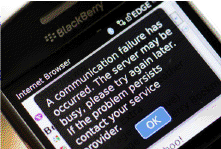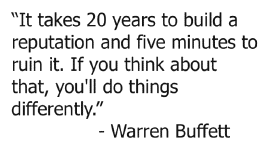The “12 Days of Christmas,” PR-style
‘Tis the season for the annual Christmas Price Index from PNC Wealth Management, which tallies up the cost of the “12 Days of Christmas” each year. According to the 2012 appraisal, there’s just over a six percent mark-up from last year, meaning it’ll set you back a cool $107,300, as reported by USA Today.
Here’s a detailed list of the breakdown:
- Partridge, $15; last year: same
- Pear tree, $189.99; last year: $169.99
- Two turtle doves, $125; last year: same
- Three French hens, $165; last year: $150
- Four calling birds (canaries), $519.96; last year: same
- Five gold rings, $750; last year: $645
- Six geese a-laying, $210; last year: $162
- Seven swans a-swimming, $7,000; last year: $6,300
- Eight maids a-milking, $58; last year: same
- Nine ladies dancing (per performance), $6,294; last year: same
- 10 lords a-leaping (per performance), $4,767; last year: same
- 11 pipers piping (per performance), $2,562; last year: $2,428
- 12 drummers drumming (per performance), $2,776; last year: $2,630
But here at PerkettPR, we’re singing a bit of a different tune. In keeping with the coming holidays, we thought it would be fun to create our own version on the classic song, just for our PR pals. After all, what good is being in this year’s so-called seventh-most-stressful job in America if we can’t poke a little fun at it – and ourselves? So without further ado:
On the first day of Christmas the PR gods granted me… a last-minute press release edit.
On the second day of Christmas the PR gods granted me… two misquoted clients.
On the third day of Christmas the PR gods granted me… three RFPs.
On the fourth day of Christmas the PR gods granted me… four conference calls.
On the fifth day of Christmas the PR gods granted me… five cu-ups of coffee (Or is it happy hour? Then co-old martinis it is!).
On the sixth day of Christmas the PR gods granted me… six urgent emails a-waiting.
On the seventh day of Christmas the PR gods granted me… seven events a-networking.
On the eighth day of Christmas the PR gods granted me… eight stories not a-newsworthy.
On the ninth day of Christmas the PR gods granted me… nine awards needing drafting.
On the tenth day of Christmas the PR gods granted me… 10 products a-launching.
On the eleventh day of Christmas the PR gods granted me… 11 tweets to be posted.
On the twelfth day of Christmas the PR gods granted me… 12 HAROs needing pitching, 11 tweets to be posted, 10 products a-launching, nine awards needing drafting, eight stories not a-newsworthy, seven events a-networking, six urgent emails a-waiting, five cups of coffee (oh, forget it…just bring on the martinis), four conference calls, three RFPs, two misquoted clients… and a last-minute press-release edit.
Care to add some more ideas on how we can “spin” the 12 days our way? Let us know in the comments below. And, last but certainly not least, we wish you and yours a very happy holiday season from all of us here at PerkettPR!


 The balance of power in B2B public relations has shifted. No longer does the media hold all the cards, although they are still important influencers.
The balance of power in B2B public relations has shifted. No longer does the media hold all the cards, although they are still important influencers.  Using social media correctly is like putting your Rolodex on steroids. Perhaps the best thing about using social media is that it allows you to communicate with all of your contacts at once through status updates. But Melinda F. Emerson at
Using social media correctly is like putting your Rolodex on steroids. Perhaps the best thing about using social media is that it allows you to communicate with all of your contacts at once through status updates. But Melinda F. Emerson at ![business-conflict-resolution[5] (1)](https://perkettprsuasion.com/wp-content/uploads/2012/09/business-conflict-resolution5-1-150x150.jpeg) It’s easy to play up the adversarial relationship between “Hacks” and “Flacks,” but the truth of this perennial love/hate relationship is that that we really do need one other. Although the value of PR professionals to journalists is often called into question, as
It’s easy to play up the adversarial relationship between “Hacks” and “Flacks,” but the truth of this perennial love/hate relationship is that that we really do need one other. Although the value of PR professionals to journalists is often called into question, as 







 Apparel retailer,
Apparel retailer,